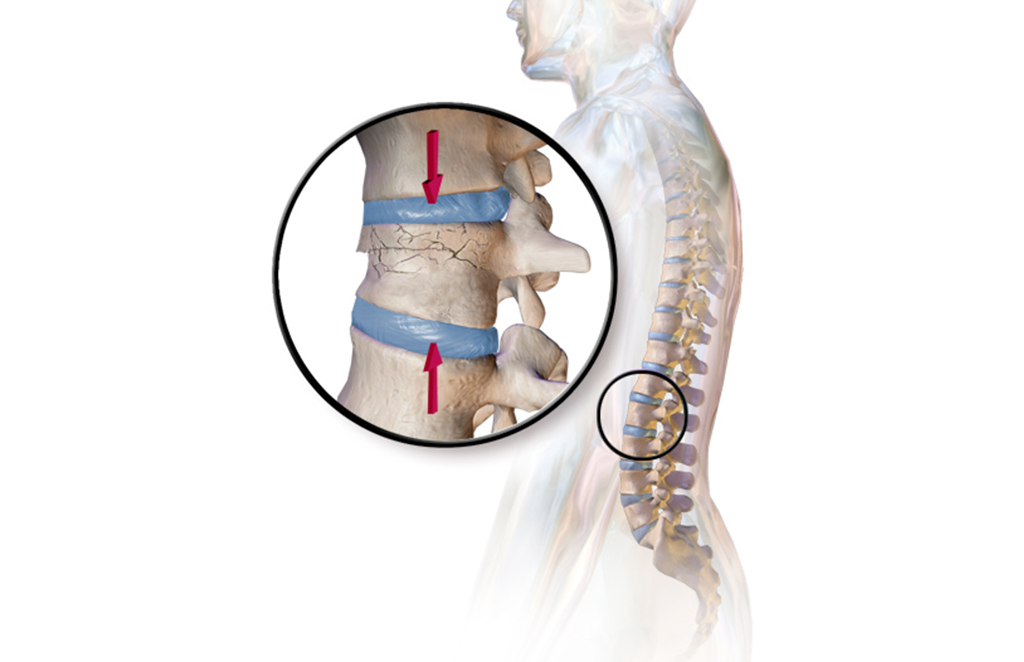Our spine provides structural support to the body and plays a pivotal role in allowing the body to perform various functions. Our spine is highly sensitive, and any damage or injury to the spinal column can lead to consequences that can even result in temporary or permanent disability. A tear in the annular tissue or torn disc is one such problem of the spine that needs immediate medical attention to prevent further damage to the spine tissue.
Stem cell therapy for spinal torn discs is an advanced minimally-invasive, non-surgical treatment that uses autologous stem cell injections to treat the condition. Stem cell treatment for the spine is a novel regenerative option that repairs the disc damage and regenerates healthy tissue without surgery.
Spinal torn discs
The vertebral disc has two parts, namely annulus fibrosus and nucleus pulposus. The annulus fibrosus is a tough outer shell that is surrounded by nucleus pulposus containing jelly-like material made of water and a network of collagen fibers. A healthy disc has an outer shell, and inner fibrous material called nucleus pulposus. Whereas, in the case of the spinal torn disc, the outer shell of the annulus fibrosus cracks or tears. This leads to the spilling of the inner jelly, eventually developing a torn disc.
Our spinal discs act as the shock absorbers between the vertebrae. Any trauma, high impact activities and pressure in the discs can result in torn discs. With increased pressure on the spinal discs, they tend to lose flexibility and hydration, thereby causing cracks and tears. This leads to severe pain and inflammation in the surrounding structures of the spine.
The pain resulting from a torn disc can be mild to severe. The severity of the spinal torn disc might vary from person to person. Also, a few of them might not experience any symptoms of a torn disc. However, the degree of pain depends on the extent of the tear and its location. The pain in the neck and low back can sometimes radiate to the arms and legs as well. The symptoms resulting from a torn disc can worsen prolonged sitting and activities that impose pressure on the affected discs.
The disc material naturally gets degenerated with the process of aging, which makes the ligaments holding them weaker. Also, trauma or stress injury to the discs can result in a disc tear. To evaluate a spinal torn disc, the doctor would learn about your medical history of any traumatic events or injuries to the spine. Also, you would be asked for an X-ray or MRI scan to evaluate the disc tear. MRI scan helps in precise diagnosis of the condition when compared to an X-ray imaging, as soft tissues are not shown on an X-ray image.
Treatment for damaged spinal discs
Usually, the symptoms of torn discs can become persistent if the disc rupture is unable to heal on their own. Conservative methods for spinal torn disc treatment begins with pain and anti-inflammatory medications. Also, placing ice packs and heat treatments are done to improve the blood flow in the damaged area. Also, physical therapy might be prescribed to regain strength in the muscles that support the spine.
Surgery for torn discs often involves post-treatment complications, such as developing the risk of infections. Surgical intervention to treat a disc tear is the final option where the conservative modes of treatment fail to treat the condition.
Stem cell treatment for spinal torn discs
Stem cell treatment for disc degeneration enables to heal the damaged tissue in the spine and repair into a healthy one without surgery. Stem cell therapy for spinal torn discs is an advanced regenerative procedure that enables the repair of the damaged spine tissue and accelerates the body’s mechanism to regrow the healthy tissue.
Stem cell therapy for spinal torn discs is a same-day, outpatient protocol that does not require hospitalization. The procedure is highly safe and does not result in any form of side effects nor post-treatment complications. The patients who received stem cell therapy for spinal torn discs can get back to performing their routine tasks within 2 to 3 days of receiving stem cell injections. Post-management care for spinal torn discs involves physiotherapy exercises to increase the blood flow & strength to the treated area and heal the damaged tissue faster.
Platelet lysate injections to treat spinal torn discs
In addition to stem cell treatment, platelet lysate injections are given for the treatment of spinal discs. Platelet lysate injections contain a high concentration of autologous platelets, which naturally aid in the release of growth factors that are essential for healing.
Platelet lysate injections for disc related problems provide extreme relief from the lower back pain and numbness in the affected area of the spine. Platelet lysate procedures for spinal torn discs are out-patient treatments where one can return to their regular activities once they are at an ease after the procedure.
Our clinics can help you get rid of orthopedic pain with advanced stem cell treatments. Do visit our clinic in Hyderabad and Mumbai or contact us at 7306070809 for more information.
Frequently asked questions (FAQs)
Does regenerative spine treatment help in regrowing the spinal discs?
Stem cell therapy helps in treating torn discs by healing the damaged tissue and regenerating healthy tissue. Stem cells are the ideal therapeutic agents for disc regeneration. Stem cells collected from the bone marrow are concentrated in a lab and reinjected into the damaged disc to repair and regenerate healthy tissue.
Are platelet treatments effective for spinal disc injuries?
Platelets have enormous benefits that include spinal disc regeneration. The blood platelets collected from the patient are processed to obtain a plasma that is rich in platelets. The concentrated form of platelets is injected into the damaged tissue of the spine with the help of image-guided techniques, such as X-ray fluoroscopy and ultrasound. The platelets release growth factors that enable tissue to accelerate the ongoing repair and regeneration at the damaged area.

